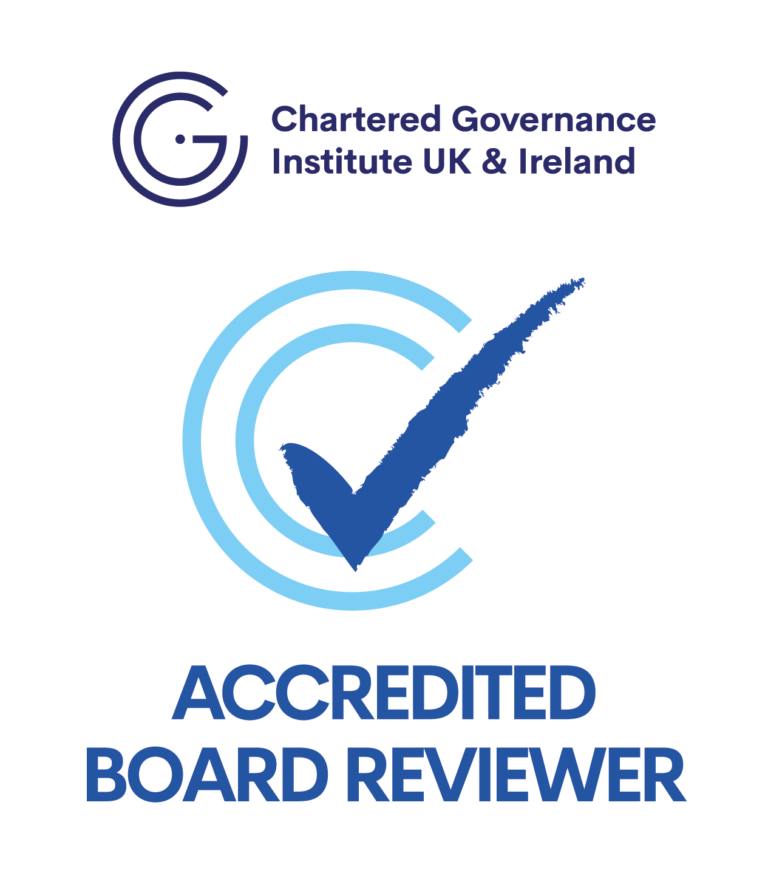
Case Study
Strengthening Board Dynamics and Strategic Alignment in Financial Services
Home » Case Study » Strengthening Board Dynamics and Strategic Alignment
At a Glance
Looking to take your board to the next level?

Company Background and Overview
A company with a turnover of £4.1 billion, which is a wholly-owned subsidiary of a European-based global group, oversees five regulated insurance companies operating in the United Kingdom and Europe. The board’s immediate objective was to successfully deliver on its five-year growth plan and then shift focus to an even more challenging forthcoming five-year plan.
The board comprised the Chief Executives of each of the five operating companies, two directors from the holding company, and four independent, commercially-minded non-executive directors (NEDs), including the Chairman.
Despite its strong governance framework, the board faced complexities due to its status as a wholly-owned subsidiary. These complexities impacted the board’s ability to make independent decisions and maintain accountability to the various financial services regulators supervising its operations.
01.
The Challenges
The Chairman believed that the Board, with its high average IQ and excellent corporate governance, led by an empowered Company Secretary, was effective and did not expect much value to be derived from the external board evaluation process. The Company Secretary, however, felt that although the governance aspects were effective, sensed something was missing.
The review uncovered several critical issues that were hindering the board’s effectiveness:
Low Emotional Intelligence (EQ)
While the board excelled in IQ and governance metrics, it fell short in emotional intelligence. This shortcoming resulted in less effective communication, limited engagement, and a general lack of energy and drive in the boardroom.
Disempowerment of Non-Executive Directors (NEDs)
The NEDs and the board as a whole were disempowered, primarily due to the dominance of executive directors and the overarching governance and control structures of the group. This dominance stifled the NEDs’ ability to contribute strategically, reducing their role to merely endorsing decisions instead of driving strategic conversations.
Ineffective Risk Management
The board’s approach to risk evaluation was lacking, which raised concerns given the industry’s regulatory requirements. The predominance of executive directors and the size of the board exacerbated this issue, resulting in inadequate risk management and strategic oversight.
Misalignment with Best Practices
The current governance structure, shaped by the parent company’s influence, was not ideally aligned with best practices in financial services. This misalignment was especially apparent in the board’s limited attention to strategic discussions, which were overshadowed by operational issues.
02.
The Solutions
To tackle these challenges, the Company undertook various strategic actions focused on boosting the board’s effectiveness, especially by empowering the NEDs and enhancing the board’s overall emotional intelligence (EQ):
Restructuring the Board Composition
The board reduced the number of executive directors to only the CEO and CFO, which allowed for a more balanced representation of NEDs. This change empowered the NEDs with a stronger voice in strategic discussions and decision-making processes.
Empowering Non-Executive Directors
The NEDs were given more significant roles within the board’s committees, including chairing key committees. This empowerment allowed them to take ownership of critical governance areas and contribute more effectively to the board’s strategic direction.
Enhancing Risk Management
A senior independent director was appointed to lead the board’s risk management efforts. This director worked closely with the NEDs to ensure that risk interrogation was thorough and aligned with industry best practices. The executive lead on risk was also evaluated and supported to ensure they had the necessary competence to manage the organisation’s complex risk profile.
Improving Emotional Intelligence (EQ)
To address the board’s low EQ, targeted workshops and coaching sessions were introduced. These initiatives focused on improving communication, fostering a culture of inclusion, and building stronger relationships among board members.
Strengthening Board Culture
The board worked on cultivating a culture of inclusion and empowerment, where all members felt valued and encouraged to contribute. This cultural shift was essential for moving the board away from merely endorsing decisions to actively engaging in strategic leadership.
Strategic Alignment and Communication
The board implemented new practices to ensure that discussions remained focused on strategic issues rather than getting bogged down in operational details. This included setting clearer agendas and ensuring that strategic topics were prioritised in meetings.


03.
The Outcomes
The actions taken led to a significant transformation in the board’s dynamics and overall effectiveness:
Balanced Leadership and Empowerment
The restructuring and empowerment of NEDs allowed for more balanced leadership within the board. NEDs became more engaged and proactive, leading to richer, more strategic discussions.
Improved Emotional Intelligence (EQ)
The board’s focus on improving EQ led to better communication, higher energy levels, and a more collaborative atmosphere. This improvement enhanced the board’s ability to tackle complex challenges and make informed decisions.
Effective Risk Management
With a stronger focus on risk management, led by the senior independent director and empowered NEDs, the board was better equipped to address the regulatory demands of the financial services industry. This shift reduced governance risks and improved the board’s overall oversight capabilities.
Alignment with Best Practices
The board’s realignment with financial services best practices strengthened its governance framework, making it more responsive to both internal and external challenges.
Enhanced Strategic Focus
The cultural shift towards inclusion and empowerment, coupled with clearer communication, allowed the board to refocus on its strategic objectives. The board became a more integral component of the leadership chain, adding significant value to the organisation’s long-term planning and success.
The Regulator was particularly interested in the board review’s findings as they provided critical insights into the effectiveness of communication and the impact of culture on the board’s governance practices.
The improvements made following the evaluation not only exceeded the expectations of the Chairman and the Company Secretary but also fully addressed the Regulator’s concerns, positioning the board to meet future regulatory expectations with greater confidence.
In Summary
The company’s experience underscores the importance of balancing IQ with EQ, empowering non-executive directors, and ensuring that a board is not overshadowed by executive dominance.
Initiated by an insightful Company Secretary, the board review process revealed key areas for improvement, which were addressed to transform the board into a more effective, strategic, and empowered governance body.




